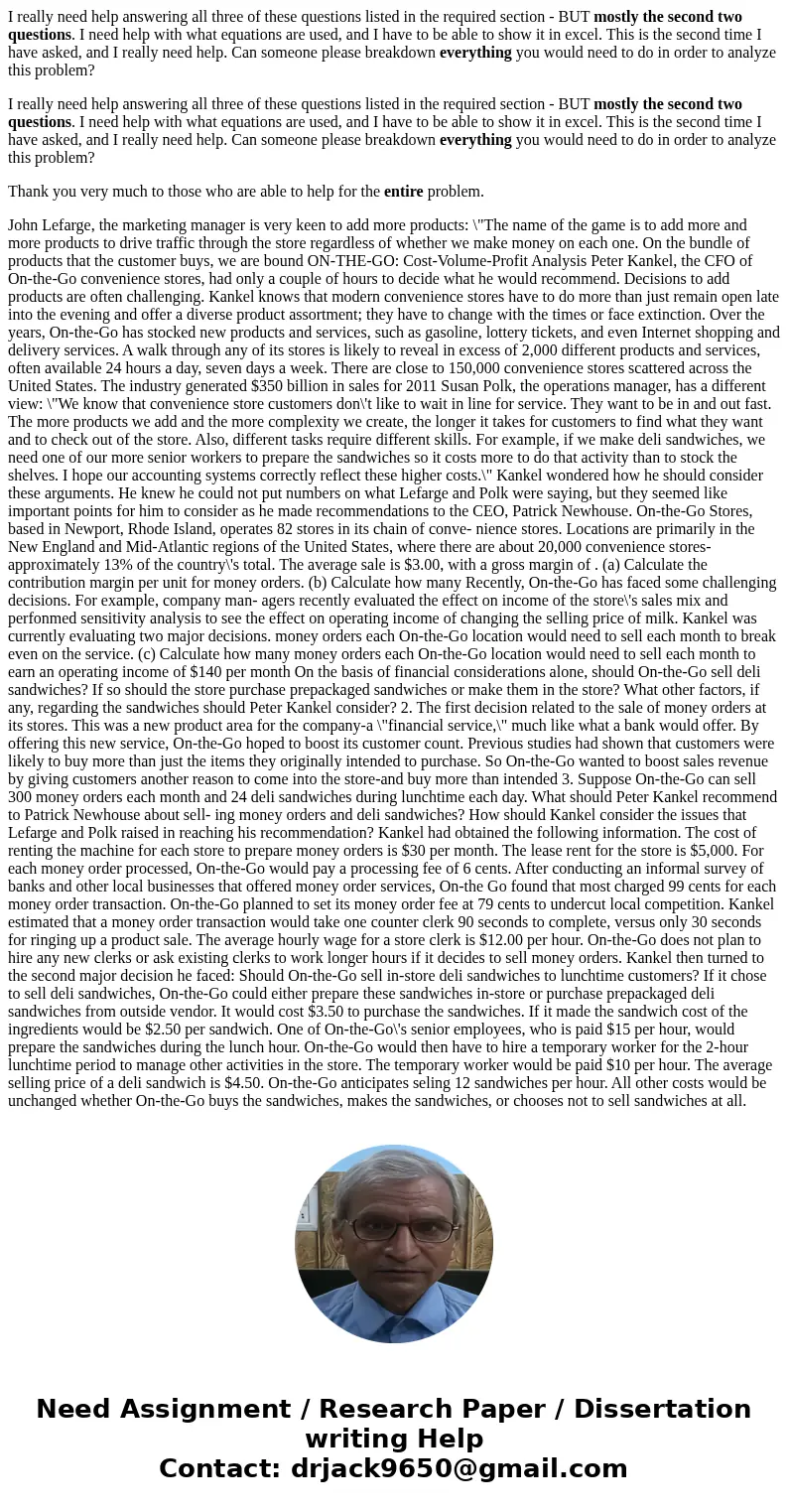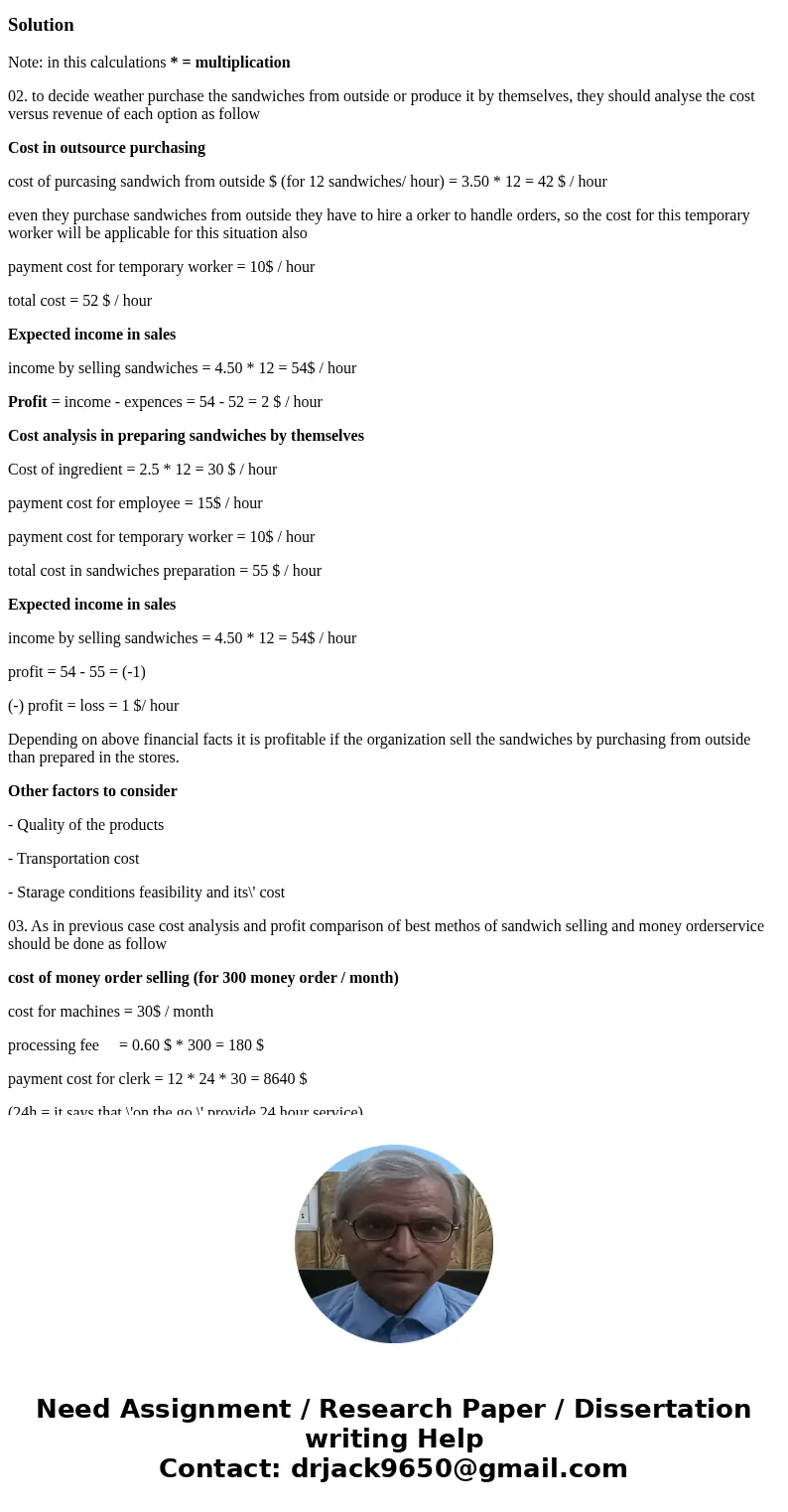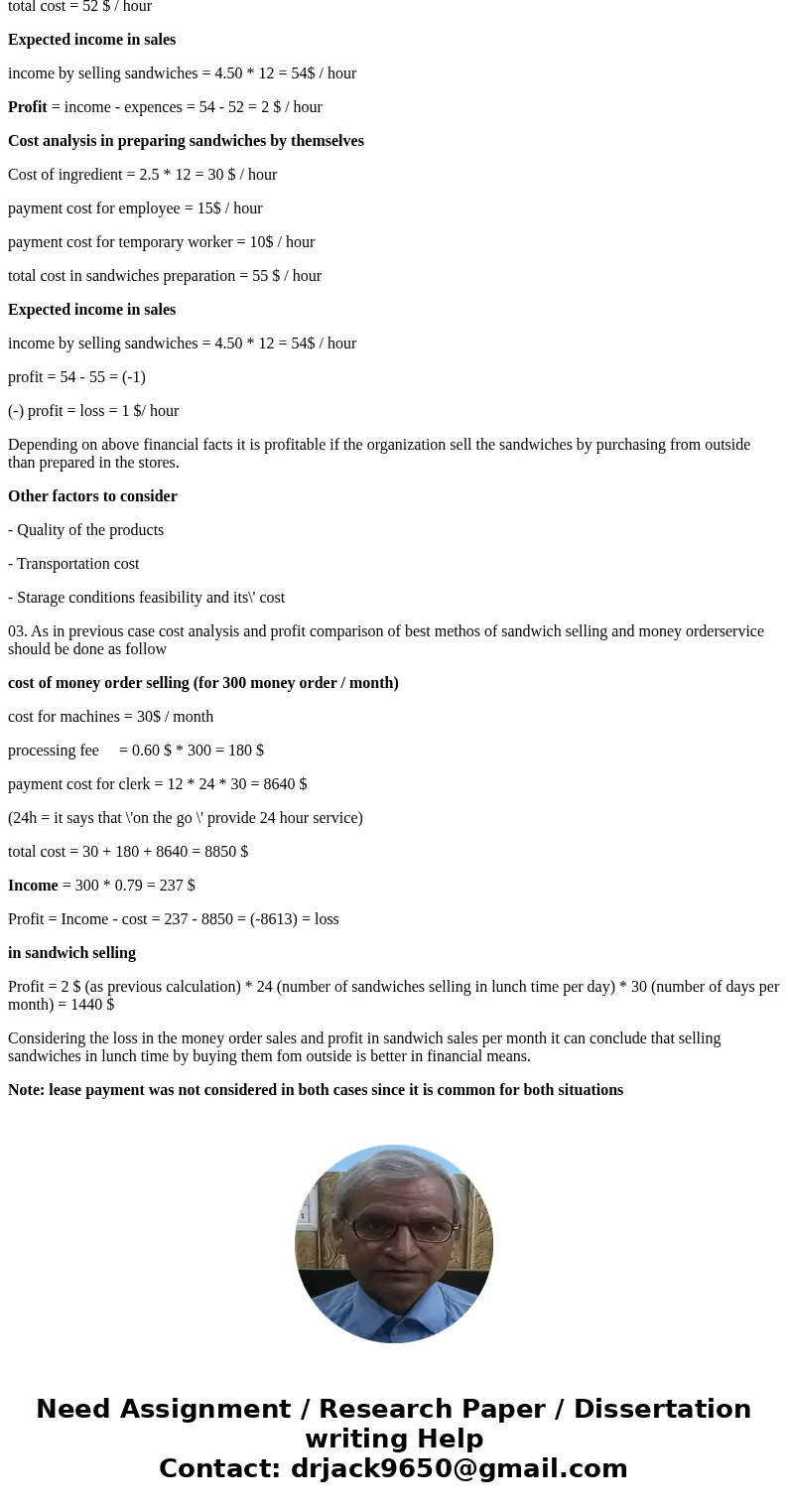I really need help answering all three of these questions li
I really need help answering all three of these questions listed in the required section - BUT mostly the second two questions. I need help with what equations are used, and I have to be able to show it in excel. This is the second time I have asked, and I really need help. Can someone please breakdown everything you would need to do in order to analyze this problem?
I really need help answering all three of these questions listed in the required section - BUT mostly the second two questions. I need help with what equations are used, and I have to be able to show it in excel. This is the second time I have asked, and I really need help. Can someone please breakdown everything you would need to do in order to analyze this problem?
Thank you very much to those who are able to help for the entire problem.
John Lefarge, the marketing manager is very keen to add more products: \"The name of the game is to add more and more products to drive traffic through the store regardless of whether we make money on each one. On the bundle of products that the customer buys, we are bound ON-THE-GO: Cost-Volume-Profit Analysis Peter Kankel, the CFO of On-the-Go convenience stores, had only a couple of hours to decide what he would recommend. Decisions to add products are often challenging. Kankel knows that modern convenience stores have to do more than just remain open late into the evening and offer a diverse product assortment; they have to change with the times or face extinction. Over the years, On-the-Go has stocked new products and services, such as gasoline, lottery tickets, and even Internet shopping and delivery services. A walk through any of its stores is likely to reveal in excess of 2,000 different products and services, often available 24 hours a day, seven days a week. There are close to 150,000 convenience stores scattered across the United States. The industry generated $350 billion in sales for 2011 Susan Polk, the operations manager, has a different view: \"We know that convenience store customers don\'t like to wait in line for service. They want to be in and out fast. The more products we add and the more complexity we create, the longer it takes for customers to find what they want and to check out of the store. Also, different tasks require different skills. For example, if we make deli sandwiches, we need one of our more senior workers to prepare the sandwiches so it costs more to do that activity than to stock the shelves. I hope our accounting systems correctly reflect these higher costs.\" Kankel wondered how he should consider these arguments. He knew he could not put numbers on what Lefarge and Polk were saying, but they seemed like important points for him to consider as he made recommendations to the CEO, Patrick Newhouse. On-the-Go Stores, based in Newport, Rhode Island, operates 82 stores in its chain of conve- nience stores. Locations are primarily in the New England and Mid-Atlantic regions of the United States, where there are about 20,000 convenience stores-approximately 13% of the country\'s total. The average sale is $3.00, with a gross margin of . (a) Calculate the contribution margin per unit for money orders. (b) Calculate how many Recently, On-the-Go has faced some challenging decisions. For example, company man- agers recently evaluated the effect on income of the store\'s sales mix and perfonmed sensitivity analysis to see the effect on operating income of changing the selling price of milk. Kankel was currently evaluating two major decisions. money orders each On-the-Go location would need to sell each month to break even on the service. (c) Calculate how many money orders each On-the-Go location would need to sell each month to earn an operating income of $140 per month On the basis of financial considerations alone, should On-the-Go sell deli sandwiches? If so should the store purchase prepackaged sandwiches or make them in the store? What other factors, if any, regarding the sandwiches should Peter Kankel consider? 2. The first decision related to the sale of money orders at its stores. This was a new product area for the company-a \"financial service,\" much like what a bank would offer. By offering this new service, On-the-Go hoped to boost its customer count. Previous studies had shown that customers were likely to buy more than just the items they originally intended to purchase. So On-the-Go wanted to boost sales revenue by giving customers another reason to come into the store-and buy more than intended 3. Suppose On-the-Go can sell 300 money orders each month and 24 deli sandwiches during lunchtime each day. What should Peter Kankel recommend to Patrick Newhouse about sell- ing money orders and deli sandwiches? How should Kankel consider the issues that Lefarge and Polk raised in reaching his recommendation? Kankel had obtained the following information. The cost of renting the machine for each store to prepare money orders is $30 per month. The lease rent for the store is $5,000. For each money order processed, On-the-Go would pay a processing fee of 6 cents. After conducting an informal survey of banks and other local businesses that offered money order services, On-the Go found that most charged 99 cents for each money order transaction. On-the-Go planned to set its money order fee at 79 cents to undercut local competition. Kankel estimated that a money order transaction would take one counter clerk 90 seconds to complete, versus only 30 seconds for ringing up a product sale. The average hourly wage for a store clerk is $12.00 per hour. On-the-Go does not plan to hire any new clerks or ask existing clerks to work longer hours if it decides to sell money orders. Kankel then turned to the second major decision he faced: Should On-the-Go sell in-store deli sandwiches to lunchtime customers? If it chose to sell deli sandwiches, On-the-Go could either prepare these sandwiches in-store or purchase prepackaged deli sandwiches from outside vendor. It would cost $3.50 to purchase the sandwiches. If it made the sandwich cost of the ingredients would be $2.50 per sandwich. One of On-the-Go\'s senior employees, who is paid $15 per hour, would prepare the sandwiches during the lunch hour. On-the-Go would then have to hire a temporary worker for the 2-hour lunchtime period to manage other activities in the store. The temporary worker would be paid $10 per hour. The average selling price of a deli sandwich is $4.50. On-the-Go anticipates seling 12 sandwiches per hour. All other costs would be unchanged whether On-the-Go buys the sandwiches, makes the sandwiches, or chooses not to sell sandwiches at all.Solution
Note: in this calculations * = multiplication
02. to decide weather purchase the sandwiches from outside or produce it by themselves, they should analyse the cost versus revenue of each option as follow
Cost in outsource purchasing
cost of purcasing sandwich from outside $ (for 12 sandwiches/ hour) = 3.50 * 12 = 42 $ / hour
even they purchase sandwiches from outside they have to hire a orker to handle orders, so the cost for this temporary worker will be applicable for this situation also
payment cost for temporary worker = 10$ / hour
total cost = 52 $ / hour
Expected income in sales
income by selling sandwiches = 4.50 * 12 = 54$ / hour
Profit = income - expences = 54 - 52 = 2 $ / hour
Cost analysis in preparing sandwiches by themselves
Cost of ingredient = 2.5 * 12 = 30 $ / hour
payment cost for employee = 15$ / hour
payment cost for temporary worker = 10$ / hour
total cost in sandwiches preparation = 55 $ / hour
Expected income in sales
income by selling sandwiches = 4.50 * 12 = 54$ / hour
profit = 54 - 55 = (-1)
(-) profit = loss = 1 $/ hour
Depending on above financial facts it is profitable if the organization sell the sandwiches by purchasing from outside than prepared in the stores.
Other factors to consider
- Quality of the products
- Transportation cost
- Starage conditions feasibility and its\' cost
03. As in previous case cost analysis and profit comparison of best methos of sandwich selling and money orderservice should be done as follow
cost of money order selling (for 300 money order / month)
cost for machines = 30$ / month
processing fee = 0.60 $ * 300 = 180 $
payment cost for clerk = 12 * 24 * 30 = 8640 $
(24h = it says that \'on the go \' provide 24 hour service)
total cost = 30 + 180 + 8640 = 8850 $
Income = 300 * 0.79 = 237 $
Profit = Income - cost = 237 - 8850 = (-8613) = loss
in sandwich selling
Profit = 2 $ (as previous calculation) * 24 (number of sandwiches selling in lunch time per day) * 30 (number of days per month) = 1440 $
Considering the loss in the money order sales and profit in sandwich sales per month it can conclude that selling sandwiches in lunch time by buying them fom outside is better in financial means.
Note: lease payment was not considered in both cases since it is common for both situations



 Homework Sourse
Homework Sourse